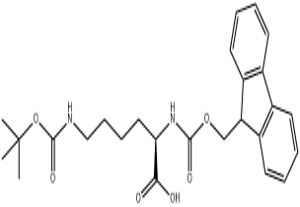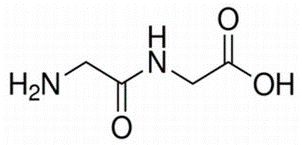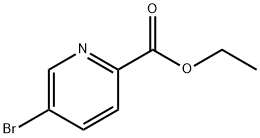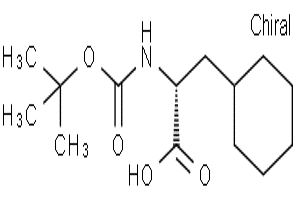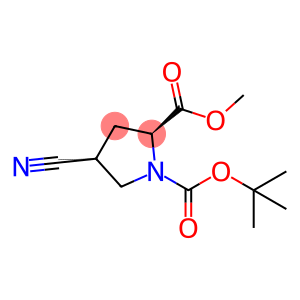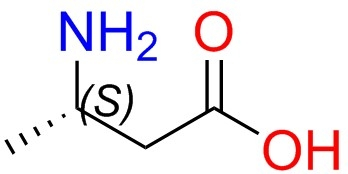FMOC-D-Lys(BOC)-OH(CAS# 92122-45-7)
| Hazard Symbols | N – Dangerous for the environment |
| Risk Codes | 50/53 – Very toxic to aquatic organisms, may cause long-term adverse effects in the aquatic environment. |
| Safety Description | S60 – This material and its container must be disposed of as hazardous waste. S61 – Avoid release to the environment. Refer to special instructions / safety data sheets. S24/25 – Avoid contact with skin and eyes. |
| WGK Germany | 3 |
| HS Code | 29225090 |
Introduction
N(ε)-Boc-N(α)-three-dimensional lysine (Fmoc-D-Lys(Boc)-OH) is an amino acid derivative comprising a protected lysine molecule and a Fmoc group. Here are some details about this compound:
Nature:
-Chemical formula: C24H29N3O6
-Molecular weight: 455.50g/mol
-Appearance: White crystal or crystalline powder
-freezing point: about 120-126°C
-Solubility: Soluble in some organic solvents, such as dimethylthiourea (DMF), dimethylformamide (DMF) and a small amount of ethanol
Use:
- Fmoc-D-Lys(Boc)-OH is one of the commonly used amino acid protecting groups in solid phase synthesis, which can be used as a starting material for the synthesis of polypeptides and proteins
-It is widely used in pharmaceutical research, biochemistry and protein synthesis
Method:
-The preparation of Fmoc-D-Lys(Boc)-OH is usually carried out by chemical synthesis methods under the guidance of nuclear magnetic resonance. This method involves Fmoc protection of Lys(Boc)-OH and is typically carried out under basic conditions. The final product is obtained by crystallization or purification.
Safety Information:
- Fmoc-D-Lys(Boc)-OH is relatively stable under general conditions of use. However, since it is a chemical, it is still necessary to pay attention to safe operation measures.
-Avoid inhalation, ingestion or contact with skin and eyes.
-Wear protective gloves, eye protection, and a suitable lab coat for use.
-Follow appropriate laboratory safety regulations and operating guidelines when handling and storing chemicals.


